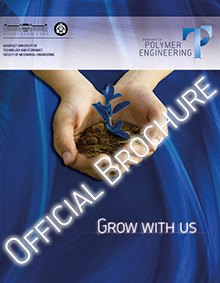Development of additive manufacturing technology of crosslinked elastomers
Dr. József Gábor Kovács
Dr. Norbert Krisztián Kovács
Andrea Zelenainé Kohári
Project summary
Additive manufacturing has transformed the manufacturing industry by enabling the production of complex geometriesthrough layer-by-layer material addition. However, the additive manufacturing of crosslinked elastomers, such as rubber,remains a significant challenge. While additive manufacturing offers advantages like design freedom and quicker iterations,traditional rubber manufacturing methods, such as injection molding and compression molding, still dominate due to theircost-effectiveness and productivity. The complex composition and processing behavior of crosslinked elastomers poseobstacles to additive manufacturing. Unlike thermoplastic materials, curable rubber does not solidify immediately afterextrusion, making accurate build-up by material extrusion-based techniques like FDM or FFF challenging. The vulcanizationprocess further complicates matters by reducing the viscosity of the rubber, leading to shape distortion and loss during theprocess. Previous attempts to use Polyjet-like technology and photosensitive monomers have faced challenges such asnozzle clogging, limited compound formulations, and poor performance of resulting elastomers. Our intent is to develop anSLA-like technology using different latex compounds and selectively coagulating/curing them with a laser beam to build upthe desired geometry layer by layer, and furthermore to investigate and explore correlations between material andtechnological aspects.
Project results
Project-related publications
- Görbe Á., Széplaki P., Bárány T.: Ultrasonic welding of ground tire rubber-filled polypropylene blends. Results in Engineering, 25, 104588/1-104588/9 (2025) https://doi.org/10.1016/j.rineng.2025.104588 IF=6 D1
- Kohári A., Bárány T.: Sustainable thermoplastic elastomers based on thermoplastic polyurethane and ground tire rubber. Journal of Applied Polymer Science, 141, e56157/1-e56157/10 (2024) 10.1002/app.56157 IF=2.7 Q2






